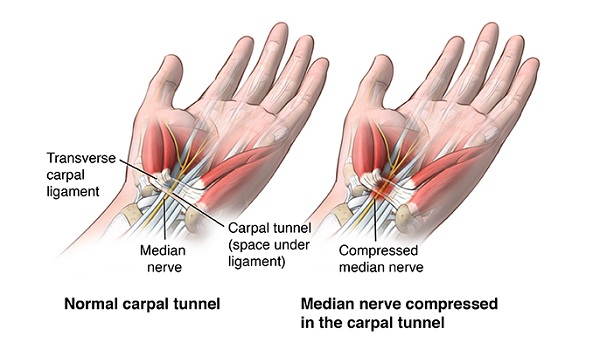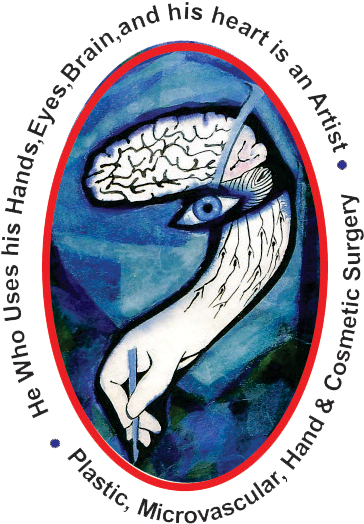Carpal Tunnel
What is carpal tunnel release surgery?
Carpal tunnel release is a surgery used to treat and potentially heal the painful condition known as carpal tunnel syndrome. Doctors used to think that carpal tunnel syndrome was caused by an overuse injury or a repetitive motion performed by the wrist or hand, often at work. They now know that it’s most likely a congenital predisposition (something that runs in families) – some people simply have smaller carpal tunnels than others. Carpal tunnel syndrome can also be caused by injury, such as a sprain or fracture, or repetitive use of a vibrating tool. It’s also been linked to pregnancy, diabetes, thyroid disease, and rheumatoid arthritis.
The median nerve and tendons that allow your fingers to move pass through a narrow passageway in the wrist called the carpal tunnel. The carpal tunnel is formed by the wrist bones on the bottom and the transverse carpal ligament across the top (or inside) of the wrist. When this part of the body is injured or tight, swelling of the tissues within the tunnel can press on the median nerve. This causes numbness and tingling of the hand, pain, and loss of function if not treated. Symptoms usually start slowly, and may get worse over time. They tend to be worse on the thumb side of the hand.
During a carpal tunnel release, a surgeon cuts through the ligament that is pressing down on the carpal tunnel. This makes more room for the median nerve and tendons passing through the tunnel, and usually improves pain and function.


Questions? We got Answers!
A diagnosis of carpal tunnel syndrome is about the only reason to have a carpal tunnel surgery. And even then, your doctor will likely want you to try nonsurgical treatments first. These may include over-the-counter pain medicines, physical therapy, changes to the equipment you use at work, wrist splints, or shots of steroids in the wrist to help relieve swelling and pain.
The reasons that a doctor would recommend a carpal tunnel release surgery may include:
- The nonsurgical interventions for carpal tunnel syndrome don’t relieve the pain.
- The doctor performs an electromyography test of the median nerve and determines that you have carpal tunnel syndrome.
- The muscles of the hands or wrists are weak and actually getting smaller because of the severe pinching of the median nerve.
- The symptoms of carpal tunnel syndrome have lasted 6 months or longer with no relief.
- Tell your doctor about all medicines you are currently taking, including over-the-counter drugs, vitamins, herbs, and supplements. You will probably need to stop taking any medicines that make it harder for the blood to clot, such as ibuprofen, aspirin, or naproxen.
- If you’re a smoker, try to quit before to the surgery. Smoking can delay healing.
- You may need to get blood tests or an electrocardiogram (ECG) before surgery.
- You will usually be asked not to eat or drink anything for 6 to 12 hours before the surgery.
Based on your medical condition, your doctor may request other specific preparations.
As with most surgeries, carpal tunnel release is not without its risks. Your wrist will be made numb and you may be given medicine to make you sleepy and not feel pain (called local anesthesia) for the procedure. In some cases general anesthesia is used, this when drugs are used to put you into a deep sleep during surgery. Anesthesia poses risks for some people. Other potential risks of a carpal tunnel release surgery include:
- Bleeding
- Infection
- Injury to the median nerve or nerves that branch out from it
- Injuries to nearby blood vessels
- A sensitive scar
The recovery from carpal tunnel surgery takes time – anywhere from several weeks to several months. If the nerve has been compressed for a long period of time, recovery may take even longer. Recovery involves splinting your wrist and getting physical therapy to strengthen and heal the wrist and hand.
There may be other risks, depending on your specific medical condition. Be sure to discuss any concerns with your doctor before the procedure.

